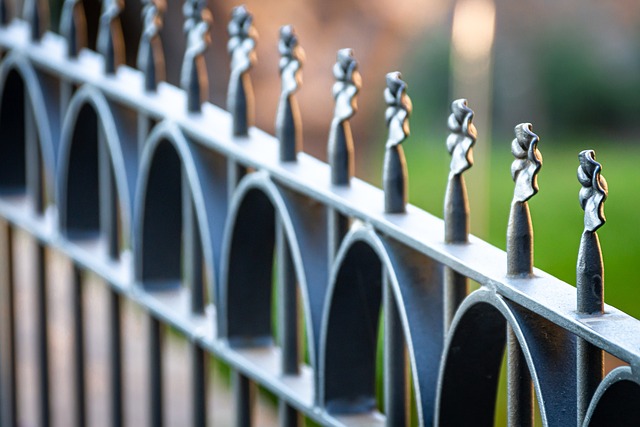In New Bedford, proper fence maintenance is essential for enhancing outdoor spaces and ensuring security. This article guides you through the intricacies of fence repair and installation in the city, addressing common issues residents often face. From understanding local regulations to choosing durable materials and maintaining your new fence, we offer expert insights. Learn why professional services are beneficial and discover a step-by-step installation process tailored for New Bedford’s unique requirements, ensuring your fencing project aligns with local guidelines and stands the test of time.
- Understanding Common Fence Issues in New Bedford
- The Benefits of Professional Fence Repair Services
- Choosing the Right Materials for Durability
- Step-by-Step Guide to Fence Installation Process
- Tips for Maintaining Your New Fence
- Local Regulations and Permits for Fencing Projects
Understanding Common Fence Issues in New Bedford
Fences in New Bedford, like anywhere, face a range of issues due to environmental factors and regular use. One of the most common problems is rot, particularly in wooden fences, caused by prolonged exposure to moisture. This can lead to weakened structures that are not only unsightly but also unsafe. Another prevalent issue is damage from local wildlife, such as deer or small animals, which can tear up fencing material if not properly secured.
Weather plays a significant role too; extreme temperatures and storms can stress fences, leading to warping, cracking, or breaking. Overgrown vegetation can also be problematic, as vines and roots can infiltrate cracks and joints, causing further deterioration. Regular maintenance is crucial to address these issues early on, preventing minor problems from escalating into costly repairs or complete fence replacements.
The Benefits of Professional Fence Repair Services
Professional fence repair services offer numerous advantages for homeowners and businesses alike. One of the primary benefits is their expertise in handling various fence issues, from broken panels to damaged posts. These professionals are equipped with the right tools and knowledge to assess the problem accurately and provide durable solutions that can withstand different weather conditions.
Moreover, hiring professionals ensures a cost-effective approach. While DIY repairs might seem like a quick solution, they often lead to further damage or necessitate frequent replacements. Experienced fence repair technicians can offer customized solutions tailored to your specific needs, ensuring long-lasting results and saving you money in the long run.
Choosing the Right Materials for Durability
When it comes to choosing materials for fence repair and installation, durability is key. Opting for high-quality, long-lasting materials ensures your investment will stand the test of time—and the elements. Steel and aluminum are popular choices due to their resistance to rust and corrosion, making them ideal for coastal areas or regions with harsh climates.
Wooden options, such as cedar or treated pine, offer an attractive natural look while maintaining durability. These materials naturally resist rot and insects, reducing maintenance over time. Additionally, modern composites—a blend of wood fibers and plastic—are eco-friendly alternatives that mimic the appearance of wood but require minimal upkeep.
Step-by-Step Guide to Fence Installation Process
Installing a new fence is a significant home improvement project, but with careful planning and a systematic approach, it can be accomplished successfully. Here’s a step-by-step guide to navigating this process:
1. Plan and Permits: Start by assessing your property and deciding on the type, style, and materials for your fence. Check local regulations and obtain any necessary permits before beginning construction. This ensures your project complies with neighborhood guidelines.
2. Prepare the Ground: Clear the area where the fence will be installed, removing vegetation, debris, and any obstructions. Mark the perimeter of the fence using stakes and string to ensure accuracy in measurement and positioning. Dig holes for posts, making sure they are deep enough to provide stability.
Tips for Maintaining Your New Fence
After installing or repairing your new fence, proper maintenance is key to ensuring its longevity and aesthetic appeal. Regular cleaning is essential; brush away debris and use mild soap and water to clean any dirt or stains. This prevents buildup and keeps your fence looking fresh.
Inspect your fence regularly for any signs of damage, such as broken boards, loose posts, or rotting sections. Repairs should be addressed promptly to prevent further deterioration. Staining or sealing the fence every few years can protect it from the elements and prolong its life, especially if you live in an area prone to harsh weather conditions.
Local Regulations and Permits for Fencing Projects
Before starting any fencing project in New Bedford, it’s crucial to familiarize yourself with local regulations and obtain necessary permits. These guidelines are in place to ensure aesthetic consistency, safety, and neighborhood harmony. The city of New Bedford has specific rules regarding fence heights, materials, and locations, especially near public spaces or historical districts.
Permits are typically required for any new installation or repairs that involve altering the existing landscape. Check with the local building department to understand the specific requirements for your project. Failure to adhere to these regulations can result in fines or even the necessity to dismantle and reassemble your fence to meet code.
